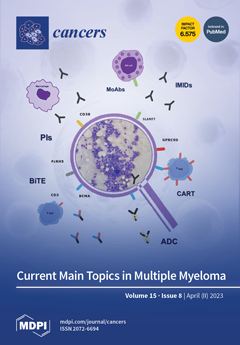Introduction: Up to 50% of non-small cell lung cancer (NSCLC) harbor EGFR alterations, the most common etiology behind brain metastases (BMs). First-generation EGFR-directed tyrosine kinase inhibitors (EGFR-TKI) are limited by blood-brain barrier penetration and T790M tumor mutations, wherein third-generation EGFR-TKIs, like Osimertinib, have shown greater activity. However, their efficacy has not been well-studied in later therapy lines in NSCLC patients with BMs (NSCLC-BM). We sought to compare outcomes of NSCLC-BM treated with either first- or third-generation EGFR-TKIs in first-line and 2nd-to-5th-line settings.
Methods: A retrospective review of NSCLC-BM patients diagnosed during 2010–2019 at Cleveland Clinic, Ohio, US, a quaternary-care center, was performed and reported following ‘strengthening the reporting of observational studies in epidemiology’ (STROBE) guidelines. Data regarding socio-demographic, histopathological, molecular characteristics, and clinical outcomes were collected. Primary outcomes were median overall survival (mOS) and progression-free survival (mPFS). Multivariable Cox proportional hazards modeling and propensity score matching were utilized to adjust for confounders.
Results: 239 NSCLC-BM patients with EGFR alterations were identified, of which 107 received EGFR-TKIs after diagnosis of BMs. 77.6% (83/107) received it as first-line treatment, and 30.8% (33/107) received it in later (2nd–5th) lines of therapy, with nine patients receiving it in both settings. 64 of 107 patients received first-generation (erlotinib/gefitinib) TKIs, with 53 receiving them in the first line setting and 13 receiving it in the 2nd–5th lines of therapy. 50 patients received Osimertinib as third-generation EGFR-TKI, 30 in first-line, and 20 in the 2nd–5th lines of therapy. Univariable analysis in first-line therapy demonstrated mOS of first- and third-generation EGFR-TKIs as 18.2 and 19.4 months, respectively (
p = 0.57), while unadjusted mPFS of first- and third-generation EGFR-TKIs was 9.3 and 13.8 months, respectively (
p = 0.14). In 2nd–5th line therapy, for first- and third-generation EGFR-TKIs, mOS was 17.3 and 11.9 months, (
p = 0.19), while mPFS was 10.4 and 6.08 months, respectively (
p = 0.41). After adjusting for age, performance status, presence of extracranial metastases, whole-brain radiotherapy, and presence of leptomeningeal metastases, hazard ratio (HR) for OS was 1.25 (95% CI 0.63–2.49,
p = 0.52) for first-line therapy. Adjusted HR for mOS in 2nd-to-5th line therapy was 1.60 (95% CI 0.55–4.69,
p = 0.39).
Conclusions: No difference in survival was detected between first- and third-generation EGFR-TKIs in either first or 2nd-to-5th lines of therapy. Larger prospective studies are warranted reporting intracranial lesion size, EGFR alteration and expression levels in primary tumor and brain metastases, and response rates.
Full article






